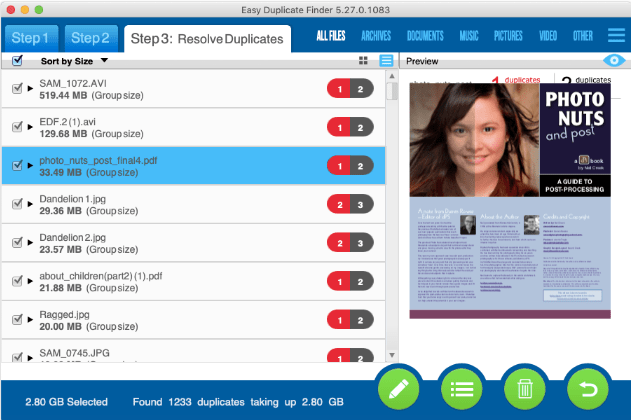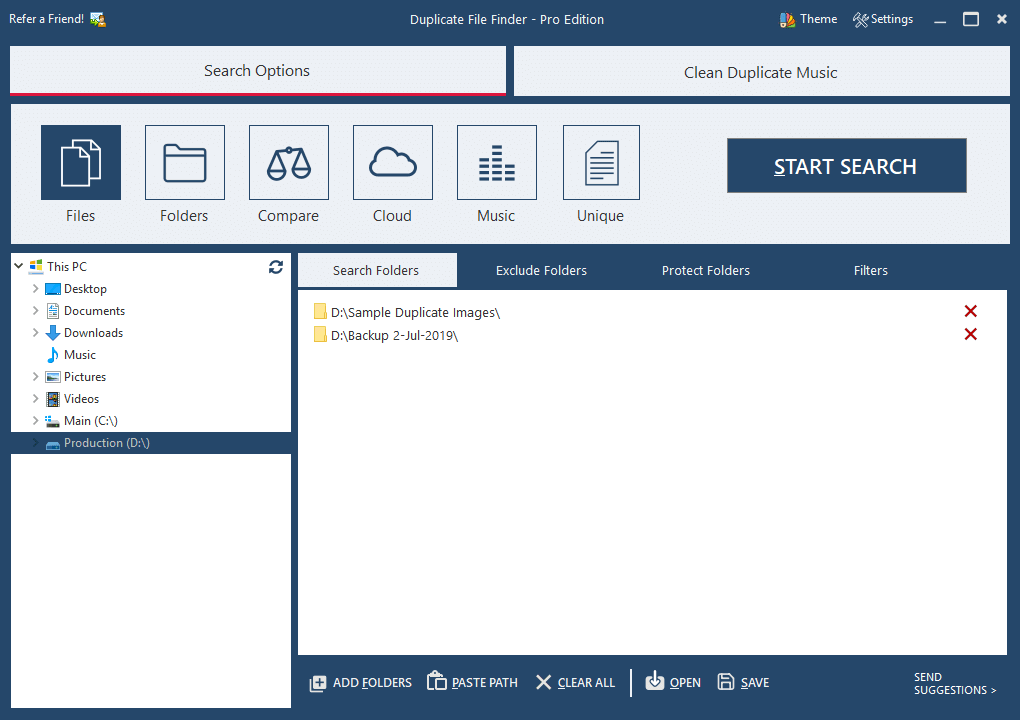

That means I had to wade through 750,000 to 1 million files. Items were in “my documents”, and c:/temp and c/batch*/ and on the desktop (various folders copied form my documents) and so on. I have a client who before I got to him, over three migrations and three different IT people ended up with five to seven (yup, five to seven) copies of everything – and his everything was some 150,000 – 200,000 UNIQUE files (he runs a publishing service among other things) – saved msg’s, draft upon draft upon drafts of journals entries and so on. It is rare to find one that operates like that. Usually I want to prioritize a certain folder to keep, possibly a few, and allow it to delete (or move) file from all other folders. In my experience, their usefulness hinges entirely on the post-search selection criteria instead. A dupfinder will allow me to combine them properly, albeit saving same songs where metadata has been changed in one file but not the other. For example, I might have some filesystem corruption and lose some MP3 files, and in the meantime I find a dump of an SD card that I hurriedly evacuated, and it contains a portion of the same collection. I have disparate collections that I have split off and recombined. If they commonly used lame criteria then it would be an issue but they don’t. I can’t remember when I’ve used one that doesn’t at least do a reasonable level of checksum hashing.

I’ve been using dupfinders for decades and I’ve found that almost all support sufficient search criteria to do a decent job of finding the duplicates. > The usefulness of a duplicate file finder lives and falls with the search criteria that it offers. With all that said, AllDup is an excellent powerful duplicate file finder for Windows. Second, an option to match partial file names as well. It would be useful if you could display two images side by side to determine if they are indeed identical or which has the better quality.

While that is the case, only one preview is shown at a time. Two areas could use improvement: first, the preview option is handy as it shows a preview of the file directly in the interface when enabled. While it is possible to ignore most of them and get great results, it is necessary to go through some of the menus such as file filters before you run scans as you may end up with no or only partial results otherwise. It will take some time before you get used to all the features that the program offers. If you save search results you can load the results at a later point in time. Search results can be saved and exported to a txt or csv file. The context menu displays other options, for instance to add a file to the ignore list, to open it on the local system or to select all files of the same path as well. Once you have select one or multiple files you right-click on the selection to display a context menu with options to delete the selection. Other filters of interest allow you to remove files of select folders from the listing or expand all groups automatically. A click may select all files but the first one for instance or all files but the one with the shortest name. Probably the most useful ones are the file selectors in the last toolbar as it enables you to automatically select files. Move the mouse cursor over an icon to get a tooltip which hints at what it does. The results window looks like an icon editor on first glance as it displays several icon toolbars at the top. While that speeds up the scan, it ignores other file types you may be interested in such as flac, doc or avi. The program scans only the following file types by default: bmp, gif, jpeg, jpg, mp3 and png.
#BEST DUPLICATE FILE FINDER FOR MAC 2016 RAR#
Search Options for instance allows you to enable the scanning the contents of zip and rar files, and to exclude files that are larger or smaller than a defined size.įile and folder filters on the other hand allow you to exclude files and folders from the scan, or turn things around and only include select files or folders in the scan.


 0 kommentar(er)
0 kommentar(er)
